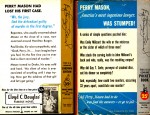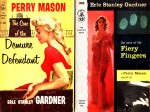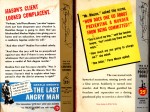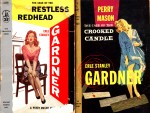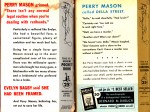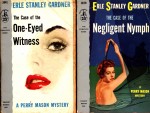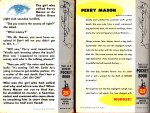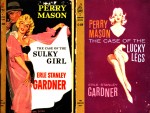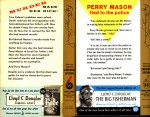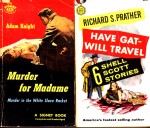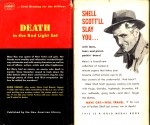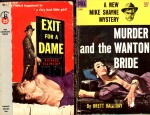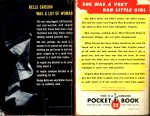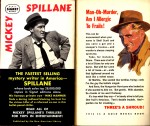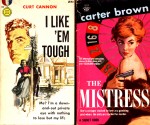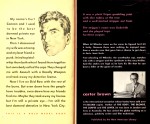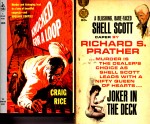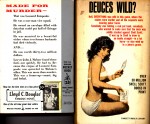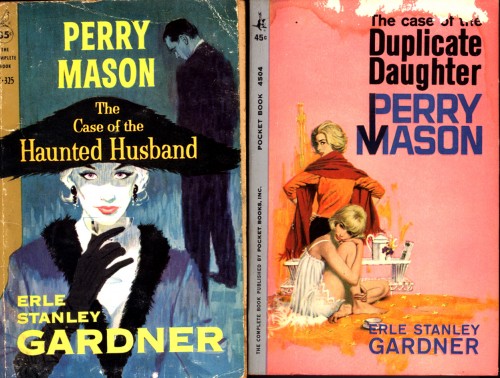 After I started school, we quit following Dad from town to town in the trailer he’d park in whatever space he could find for us. That meant that he was living in hotels, motels and boarding houses for weeks at a time, maybe making it home every weekend or two.
After I started school, we quit following Dad from town to town in the trailer he’d park in whatever space he could find for us. That meant that he was living in hotels, motels and boarding houses for weeks at a time, maybe making it home every weekend or two.
There wasn’t a lot of entertainment options when you’re building roads and bridges from cain’t see to cain’t see, even if you weren’t too tired to avail yourself of them.
That’s when he turned to paperback murder mysteries.
He preferred Perry Mason
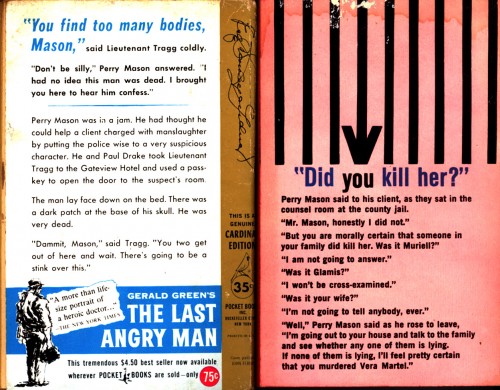 His first choice was Erle Stanley Garnder’s Perry Mason mysteries. If nothing else, the story descriptions on the backs of the book were almost as good as the book.
His first choice was Erle Stanley Garnder’s Perry Mason mysteries. If nothing else, the story descriptions on the backs of the book were almost as good as the book.
“You find too many bodies, Mason,” said Lieutenant Tragg coldly. [Tragg was the cop who always seemed to be the one accusing Mason’s clients of murder.]
“Don’t be silly,” Perry Mason answered, “I had no idea this man was dead. I brought you here to hear him confess.”
Pocket books became popular during WW II
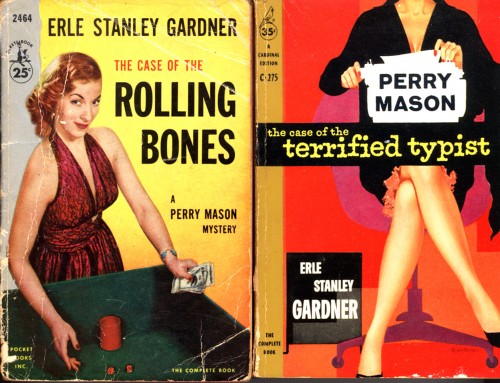 Pocket Books, now a division of Simon and Schuster, produced the first mass-market, pocket-sized paperback book in 1939, but they became really popular when material shortages during World War II worked to their advantage. The books would fit in a pocket, were easy to read and cheap to produce.
Pocket Books, now a division of Simon and Schuster, produced the first mass-market, pocket-sized paperback book in 1939, but they became really popular when material shortages during World War II worked to their advantage. The books would fit in a pocket, were easy to read and cheap to produce.
Most of Dad’s books cost a quarter, although I did see the price start to creep up over the years to 35 and 45 cents. They generally had brassy colors and semi-revealing models.
Mickey Spillane and others
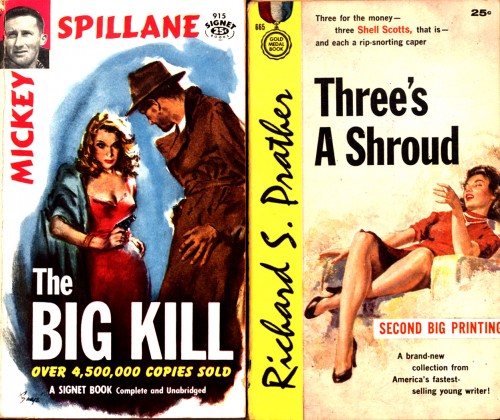 If he couldn’t find a Perry Mason, he’d dip into a Mickey Spillane or Shell Scott or whoever else happened to be on the shelf. Their covers tended to be a bit cruder (both in execution and subject matter), and their tease copy wasn’t as well done.
If he couldn’t find a Perry Mason, he’d dip into a Mickey Spillane or Shell Scott or whoever else happened to be on the shelf. Their covers tended to be a bit cruder (both in execution and subject matter), and their tease copy wasn’t as well done.
I read lots of paperbacks, but they were mostly non-fiction I picked up at Metro News on Broadway across from the Rialto. I never read the mystery genre, so I’m going to dip into Dad’s stash to see what I missed.
I asked my grandfather why HE liked to read murder mysteries, but never picked up any of my sporting or adventure magazines like Field and Stream or Argosy.
“Reading a murder mystery doesn’t make me want to go out and kill somebody. Reading about fishing would make me want to go out and do that, and I can’t,” he explained.
Mystery book photo gallery
Here are some other books cluttering up the shelf. Click on any photo to make it larger, then use your arrow keys to move through the gallery.

